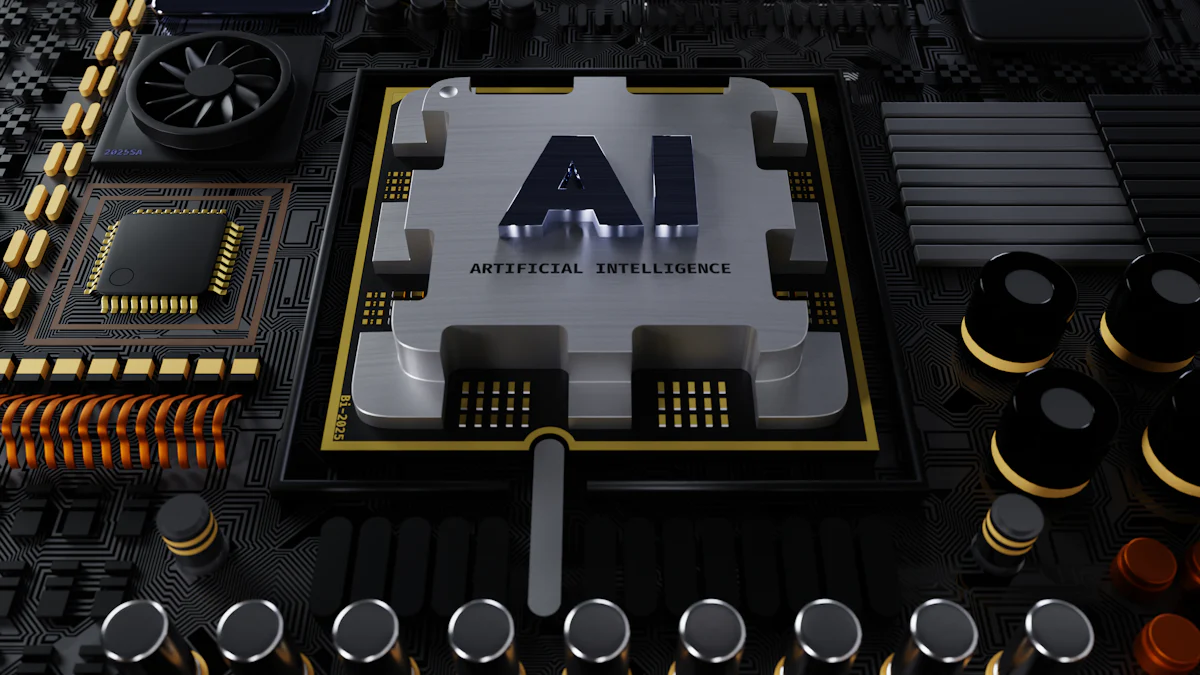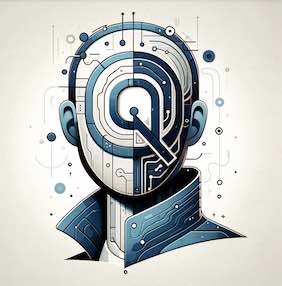A Comprehensive Guide to AI Driven Game Asset Development

AI plays a crucial role in modern game development. This technology enhances efficiency and creativity, allowing developers to create engaging experiences faster. The evolution of game asset creation showcases significant advancements. Early games like Pong and Space Invaders introduced AI-controlled opponents. Today, developers utilize AI tools to generate high-quality assets, leading to games with AI generated content. These innovations streamline workflows and inspire fresh ideas, transforming the gaming landscape.
Understanding AI in Game Development
What is AI?
Definition and types of AI
Artificial Intelligence (AI) refers to the simulation of human intelligence in machines. These machines are programmed to think and learn like humans. Various types of AI exist, including:
- Reactive Machines: These systems respond to specific inputs without memory or learning capabilities.
- Limited Memory: These systems can use past experiences to inform future decisions.
- Theory of Mind: This type of AI understands emotions and social interactions, although it remains largely theoretical.
- Self-aware AI: This advanced form of AI possesses self-awareness and consciousness, existing only in science fiction for now.
Understanding these categories helps developers select the appropriate AI for their projects.
Historical context in gaming
AI has evolved significantly since the early days of gaming. Initial implementations focused on simple algorithms that controlled non-player characters (NPCs). Games like Pac-Man showcased basic AI behaviors. As technology advanced, so did AI capabilities. The introduction of machine learning allowed NPCs to adapt and respond to player actions. Today, AI plays a vital role in creating immersive environments and dynamic gameplay.
The Role of AI in Game Asset Development
Automation of asset creation
AI streamlines the asset creation process. Developers can automate repetitive tasks, such as generating textures and models. This automation saves time and allows developers to focus on more creative aspects of game design. For instance, procedural generation techniques enable AI to create vast landscapes or intricate levels without manual input. This approach leads to the development of games with AI generated content, enhancing both efficiency and creativity.
Enhancing creativity through AI tools
AI tools foster creativity in game development. These tools provide endless ideas and inspiration for game concepts, mechanics, and elements. Developers can use generative AI to overcome creative blocks. AI analyzes player behavior and preferences, allowing for personalized gameplay experiences. This adaptability creates engaging interactions and keeps players invested in the game.
Incorporating AI into game design not only enhances the development process but also enriches the player experience. AI-driven NPCs exhibit realistic behaviors, making gameplay more immersive. As AI continues to evolve, its impact on game development will only grow.
The Process of AI Driven Game Asset Development
Step-by-Step Guide
Identifying asset requirements
Begin by determining the specific assets needed for the game. Consider the game's genre, art style, and gameplay mechanics. Create a detailed list of required elements, such as characters, environments, and sound effects. This step ensures clarity in the development process. A well-defined list helps streamline the workflow.
Choosing the right AI tools
Select AI tools that align with the identified asset requirements. Research various options available in the market. Look for tools that offer features like procedural generation, texture creation, and animation assistance. Evaluate the capabilities of each tool. Consider user reviews and case studies. For example, Scenario Incorporated's integration of generative AI significantly reduced time to market for game studios by creating style-consistent assets. This outcome illustrates the effectiveness of choosing the right AI tools.
Integrating AI into the development pipeline
Incorporate selected AI tools into the existing development pipeline. Ensure that the integration process is seamless. Train team members on how to use these tools effectively. Establish clear communication channels among team members. Regularly review the integration process to identify areas for improvement. This proactive approach enhances collaboration and maximizes the benefits of AI-driven asset development.
Best Practices for Using AI in Asset Creation
Balancing AI and human creativity
Maintain a balance between AI-generated content and human creativity. While AI can automate repetitive tasks, human input remains crucial for artistic vision. Encourage team members to provide feedback on AI-generated assets. This collaboration fosters innovation and ensures that the final product reflects the desired aesthetic. Emphasizing this balance leads to games with AI generated content that resonate with players.
Quality control measures
Implement quality control measures throughout the asset creation process. Regularly review AI-generated assets for consistency and quality. Establish clear guidelines for asset standards. Utilize peer reviews to gather diverse perspectives on the assets. Continuous evaluation ensures that the final game meets high-quality expectations. Prioritizing quality control contributes to a polished gaming experience.
Tools and Technologies for AI Driven Game Asset Development
Overview of Popular AI Tools
Description of leading AI software
Numerous AI tools assist developers in creating game assets. Scenario stands out as a versatile tool for game art creation. This software offers fine-tuning options to align with specific artistic visions. Meshy simplifies the artistic process, enabling developers to produce high-quality game art efficiently.
3D modeling programs like Maya, 3DS Max Design, Modo, and Zbrush play a crucial role in shaping game assets. These tools allow developers to create detailed 3D models that enhance gameplay experiences. Art programs such as Photoshop help in generating concept art and textures, providing essential resources for asset development.
Popular game engines like Unity and Unreal Engine facilitate the design of various types of game assets. These engines integrate seamlessly with other tools, streamlining the development process. Blender also serves as a powerful software for designing 3D assets, offering a free alternative for developers.
Comparison of features and capabilities
When comparing these tools, consider several factors:
- Ease of Use: Some tools offer user-friendly interfaces, while others may require extensive training.
- Compatibility: Ensure that chosen tools integrate well with existing workflows and other software.
- Features: Evaluate specific capabilities such as procedural generation, animation support, and texture creation.
Developers should select tools based on project needs and team expertise. Utilizing the right combination of software can lead to successful games with AI generated content.
Emerging Technologies in AI
Future trends in AI for game development
AI technology continues to evolve rapidly. Expect advancements in procedural generation techniques, allowing for more complex and dynamic game environments. Developers will likely see improvements in AI-driven NPC behaviors, enhancing realism and engagement. As machine learning algorithms become more sophisticated, expect AI to generate more personalized gaming experiences tailored to individual player preferences.
Potential impact on the industry
The integration of AI into game development holds significant implications for the industry. Developers will experience increased efficiency, reducing time spent on repetitive tasks. This shift allows more focus on creative aspects of game design. Additionally, AI-generated content can lead to innovative gameplay mechanics, attracting diverse audiences.
As AI becomes more prevalent, ethical considerations will arise. Developers must navigate challenges related to copyright and ownership of AI-generated assets. Addressing these issues will shape the future landscape of game development.
Games with AI Generated Content
Examples of Successful Implementations
Case studies of games with AI generated content
Sentinel's Quest showcases dynamic world-building and adaptive gameplay mechanics. Players experience an evolving environment that responds to actions. AI algorithms generate quests and challenges based on player choices. This implementation elevates engagement and immersion, creating a unique gaming experience.
ChronoCraft focuses on personalized player experiences through AI. The game analyzes player behavior and preferences. AI adjusts gameplay elements to enhance player engagement. This approach illustrates the significant impact of AI on game design and player interaction. Players feel a deeper connection to the game world.
Analysis of player reception and feedback
Players often express excitement about the innovative use of AI in these games. Feedback highlights the immersive qualities of Sentinel's Quest. Many players appreciate the tailored experiences in ChronoCraft. Positive reviews emphasize how AI-generated content enriches gameplay. Players enjoy the unpredictability and variety that AI brings to their gaming sessions.
Challenges and Considerations
Ethical implications of AI in gaming
Developers face ethical challenges when integrating AI into games. Concerns arise regarding the potential for bias in AI algorithms. Developers must ensure fairness in AI-generated content. Transparency in AI decision-making processes becomes crucial. Addressing these concerns fosters trust among players.
Copyright and ownership issues
Copyright and ownership of AI-generated assets present significant challenges. Questions arise about who owns the content created by AI. Developers must navigate legal frameworks surrounding AI-generated works. Establishing clear guidelines will help protect both developers and players. This clarity will shape the future landscape of game asset development.
AI transforms game asset development significantly. Developers experience enhanced efficiency and creativity through AI tools. Over 87% of developers already utilize AI in their processes. This technology can reduce development time by up to 50%. Exploring various AI tools and techniques opens new possibilities for creating engaging experiences. The future of gaming holds exciting potential. Industry executives predict that AI will manage more than half of game development within the next 5 to 10 years. Embrace AI to create innovative games with AI generated content.
See Also
Unlocking SEO Potential Using Perplexity AI: An In-Depth Manual
Writesonic AI and QuickCreator: A Battle of Content Creators
A Complete Beginner's Handbook for Content Creation and Publishing
Streamlined Content Creation: A Guide to Quick Creator's New Features
The Definitive Handbook for Achieving SaaS Content Marketing Excellence

